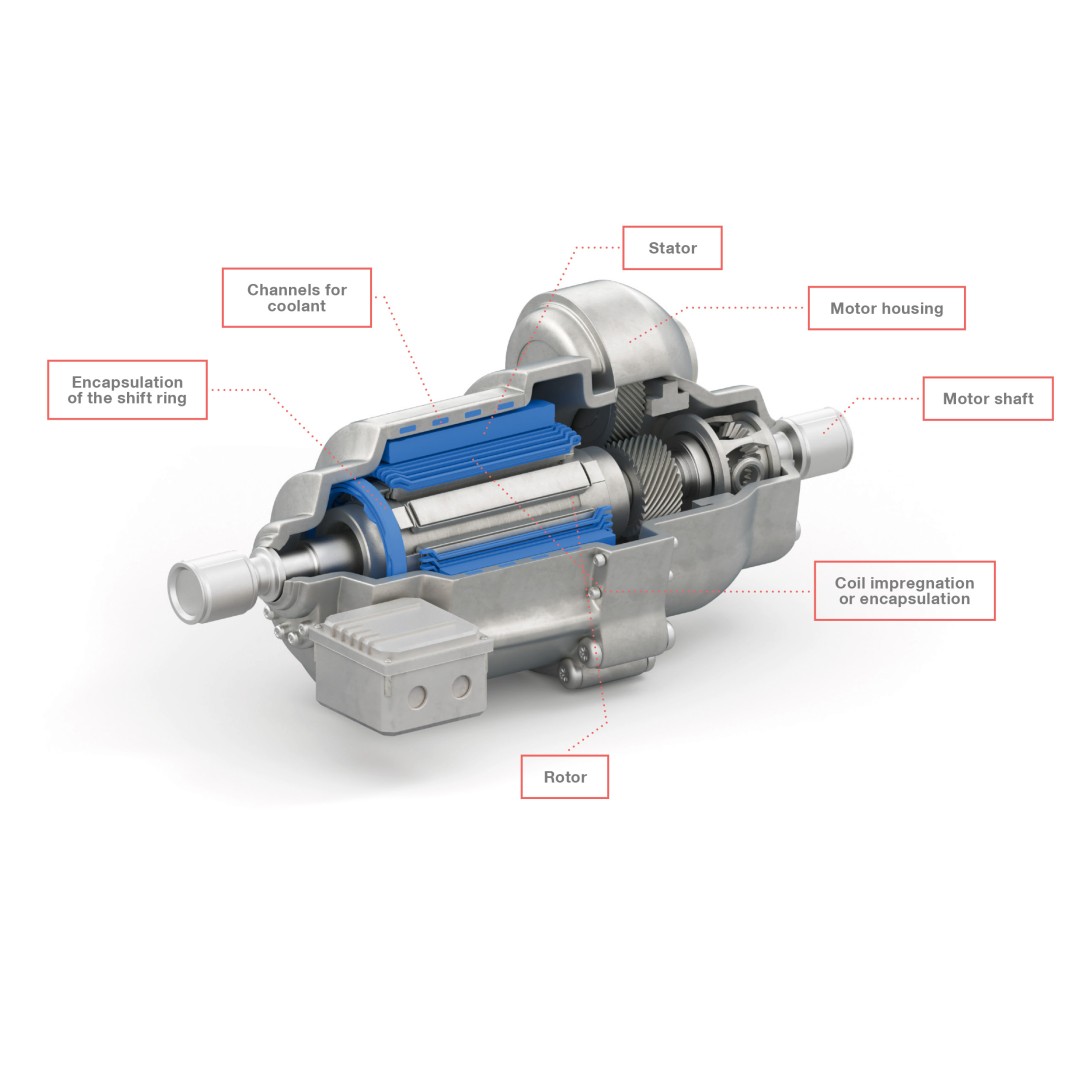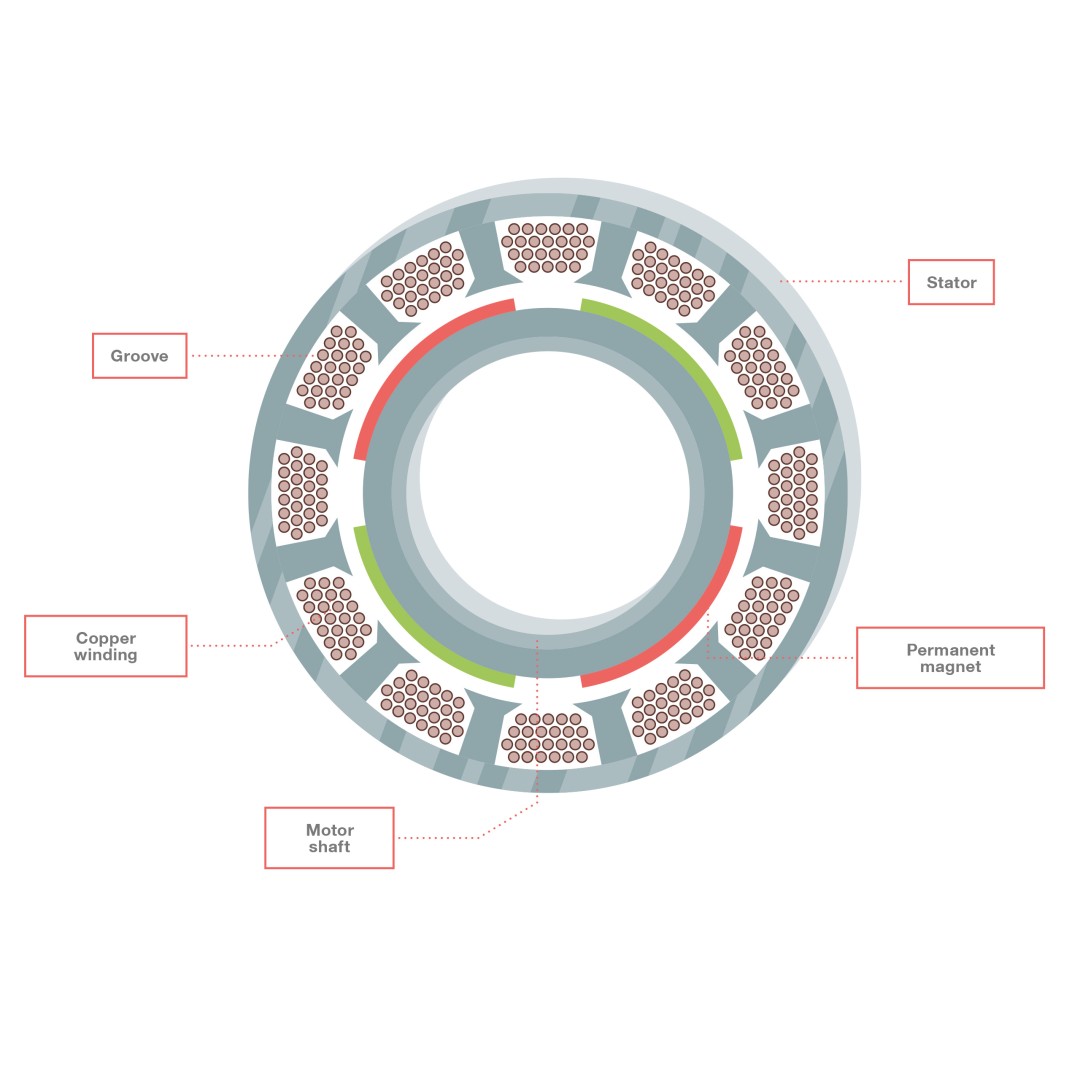Mar 01, 2018 Read time: approx. MinutesMinute
Key component electric motor
Automotive manufacturers are using three-phase current motors in electric vehicles, primarily as permanently excited synchronous motors. Such motors achieve high performances, despite their compact size and low weight. These are almost always so-called internal rotors: located on a shaft, the rotor rotates inside the stator, which is designed as a hollow body. The stator (i.e. stationary part) is fixed to the motor housing, whereas the rotor is mounted such as to rotate inside the housing. The housing is usually actively cooled.
The main stator components are the laminated core or armature – a stack of annular, punched iron plates with grooved inner rims – and a system of coils whose windings lie in the grooves. These coils, known as windings in motor technology, are supplied with three-phase current. They are designed for the three-phase current to generate a magnetic field whose direction constantly changes within the stator – the magnetic field spins around its axis. The rotor’s permanent magnets generate a permanent magnetic field, which follows the rotary field of the stator so that the rotor and motor shaft also rotate. The speed is determined by the frequency and the amount of torque by the amplitude of the three-phase current.

For more information on the topic of electromobility read our article “An Energizing Lead”

A look inside an electric motor. The silicone products used here (silicone resin, silicone encapsulants and silicone fluid) are shown in blue.

Schematic cross section of a permanently excited synchronous motor designed as an internal rotor: the rotor is positioned on the motor shaft and is located inside the stator, which is connected to the housing. The color of the permanent magnets indicate which magnetic pole is pointing to the stator (red: north pole, green: south pole). The stator windings are switched in turn so that their magnetic field makes the rotor rotate.
The windings can be designed in various ways. The traditional method is coil winding using a copper round wire – a complicated production method. The trend is currently moving towards hairpin technology, which involves forming coils from thin copper wire segments with a rectangular cross section. The segments are bent into hairpin shapes – hence the name – and inserted into the grooves made for this purpose in the laminated core, then bonded according to a certain pattern by soldering. Hairpin technology is suitable for the creation of fast, industrial-scale production.
Heat is generated in the windings and the laminated core of the stator during operation and this must be transported to the heat exchanger. A thermally conductive silicone resin or silicone encapsulant can help in the transfer of heat.
In contrast to combustion engines, three-phase motors supply a constant torque over the entire speed range used and do not therefore need complicated gearing. This kind of motor is also capable of recuperating energy, as it acts as a generator during braking, converting the majority of the kinetic energy into electricity. This recovered electric energy is fed into the traction battery.
Contact
For more information on this topic, please contact:
Mr. Dr. Klaus Angermaier
Global Business Development
WACKER SILICONES
+49 89 6279-1453
dr.klaus.angermaier@wacker.com
